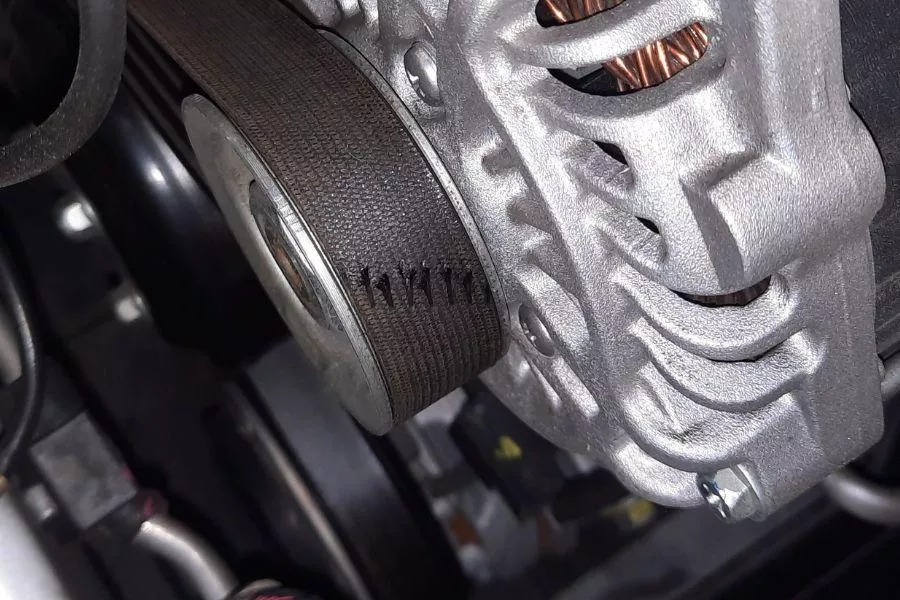New car owners tend to be paranoid over details that might indicate a problem with their rides. This is especially true for anything that seems unsightly at first glance – a scratch, a dent, a bubble, or a wrinkle.

Many of the peripheral functions in the engine bay are controlled by the drive belt
One of those that fall under this category are stitches. Of course, seeing stitches on the seat covers or steering wheel, with their attendant symmetry, is far different from noticing stitches on something as crucial as a drive belt.
When you open the engine bay on your new car, one of the things that might catch your eye is the drive belt. At just the right angle, you’ll see that this is accompanied by a row of stitches, the sight of which quickly incites feelings of dread. Does it signify something wrong or is it normal?

The stitches on a drive belt serve to form a loop by joining the two ends together
Anyone would be right to be concerned over the drive belt’s condition. Also called a serpentine belt, this band provides driving force to many of the engine’s peripheral functions. In modern cars, the drive belt replaces the multitude of belts that used to power the alternator, water pump, and air-conditioning compressor, for instance.
While the drive belt is certainly built to last under normal use, it still needs to be checked periodically for signs of cracks or fraying. If the drive belt is damaged or broken, it will instantly cause the vehicle to lose critical functions.

This could happen if you neglect to check your car's drive belt
So, back to the stitches. Guess what? They’re perfectly normal. Drive belts are primarily made of rubber strips, and the stitches are necessary to join the two ends of the strip together, forming a loop. In other words, that’s how they’re supposed to look like, especially when bought brand-new.
While the stitches are strong enough to withstand the constant heat and tension that the belt is subjected to during operation, they will lose their grip over time. This is why it’s good practice to regularly check the belt's condition before every drive.
Find more tips for beginner car owners at Philkotse.com.
Recent posts
- difference between drive belt vs timing belt Aug 18, 2023
- Serpentine vs Timing Belt Feb 22, 2021
- Car maintenance tips: How to inspect and replace serpentine belts Feb 19, 2021












